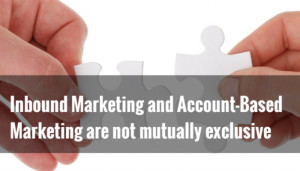 Marketing is marketing. The basic fundamentals are as true today as they ever were.
Marketing is marketing. The basic fundamentals are as true today as they ever were.
You must understand your audience – their hopes, their desires, their problems, and their fears.
You must differentiate your offering and strive for a market position that is unique, sustainable, and profitable.
All other strategies and tactics build out from those premises.
Recently, I spoke to a colleague about all of the different types of “marketing” we now have. Did I forget any?
-Account-based marketing
-Content marketing
-Social media marketing
-Agile marketing
-Predictive marketing
-Email marketing
-Search engine marketing
-Inbound marketing
-Video marketing
-Product marketing
The reality is that these are simply approaches or techniques, mainly tactical, to target, reach and influence prospective customers.
Marketing is still marketing.
Which brings me to the point of this article.
For close to the last decade, inbound marketing ruled the roost. It espoused a philosophy and an approach that asked us to cast a wide net to fill the top of our funnels with the idea that we would filter and then nurture suspects entering our nets until we converted the right ones into customers.
This approach still has validity and is not going anywhere soon.
In the last couple of years, we’ve seen the emergence of account-based marketing. For most of us in B2B marketing, the notion of targeting specific accounts is nothing new. However, the tools we have available now are different. This approach promises less waste and even more alignment with sales teams if done right.
Account-based marketing seems diametrically opposed to inbound marketing. From the one-dimensional viewpoint of how they are executed, this could be true. But, the choice between them is a false one, because you can actually achieve scale in your B2B marketing program by using them together.
Let’s take a simple example. Say you create a white paper as part of your inbound marketing program. It will probably be general in scope and you’ll promote it widely to your broader target market with the ambition that many people will download it. That’s the big stroke of inbound marketing and it will likely bring some suspects into your fold that you didn’t know about before. This is a win.
Now, there is no reason you can’t send an email with a link to that same white paper directly to your account-based marketing targets. Or better yet, maybe you could take the core content of the white paper and add some specific information about each organization you are targeting with your account-based efforts to produce a series of customized deliverables. If your target customer engages with that content, that’s a win too.
You see, you can literally leverage the same or similar content in either situation. To my earlier point, if you spent time to understand the hopes, desires, problems, and fears of your target customer, then the content you create will be driven by that information and your message will be in context whether you decide to employ inbound marketing, account-based marketing, or both.
Inbound marketing and account-based marketing do not have to be mutually exclusive efforts. They just become different tools in your marketing toolkit. They will both help you to get the job done, just in different ways. Your main consideration then becomes which tool to use in which situation. You might actually need both to succeed.
This post originally appeared on Business2Community